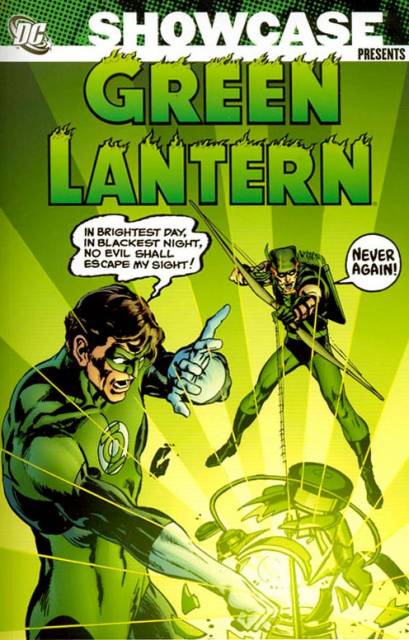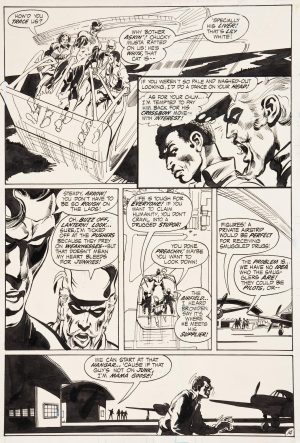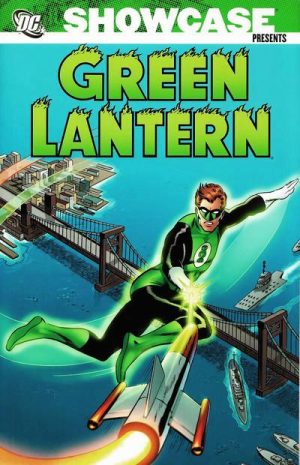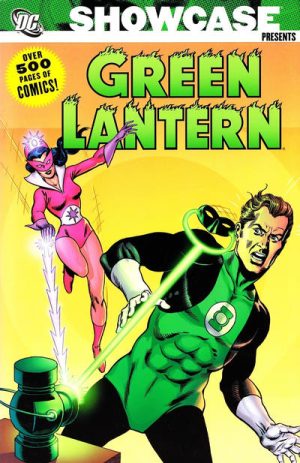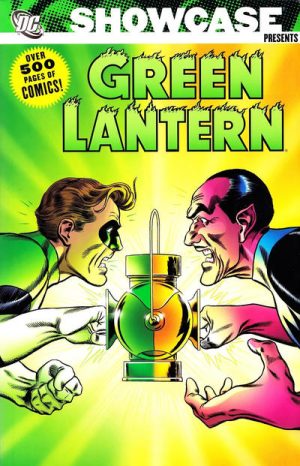Review by Frank Plowright
Hal Jordan’s run of black and white reprints ends with two contrasting sets of stories, although all written by Denny O’Neil.
The first half gathers O’Neil’s social relevance era when Green Lantern travelled the USA with Green Arrow. Out went the costumed villains, and in came the ills of the turbulent early 1970s. It was a considerable risk at the time, and humanising superheroes to confront social injustice was visionary, but, sadly, it’s not dated very well. Although well intentioned, O’Neil moralises in broad strokes, the contemporary dialogue is now laughable, and the lack of subtlety swamps the better ideas, some of which took real risks at the time, like having Green Arrow’s crimefighting partner Speedy addicted to heroin. Many issues addressed remain problems over fifty years later, some almost legitimised. Pollution, racism, drugs, the imposition of one viewpoint to the exclusion of all others, out of control police, over-population, and socially irresponsible big business are now far more familiar woes than when O’Neil highlighted them.
When it comes to the graphic realism of Neal Adams, though, it’s proved timeless and the influence can still be seen, watered down, in today’s superhero comics. He combines storytelling flair with action dynamism and the characters swoop from the pages and survive the transition to black and white reproduction.
O’Neil and Adams won critical plaudits and awards, but sales weren’t strong enough to sustain the comic, which was cancelled in 1973. Despite the lack of success at the time, DC have made their money back many times over via assorted reprints over the years, the most recent of which is 2018’s Deluxe Edition.
In 1972 Green Lantern was consigned to back-up feature for the Flash, and this volume is the only graphic novel reprinting those stories to 1977 when he again flew solo. O’Neil remains as writer, but there’s only one Adams story over three chapters, presumably intended for GL’s own comic before cancellation. It’s a powerful examination of a hero’s responsibilities, not as blighted by 1970s dialogue.
Thereafter, though, there’s a change of direction. Green Arrow goes his own way and O’Neil writes more contemporary versions of the material with which John Broome and Gardner Fox established Hal Jordan as Green Lantern. Super villains are only very rarely on the agenda as O’Neil has GL either in SF-themed adventures off Earth, or very human dramas back home. They lack the ambition and social issues, but are perfectly readable shorts. However, it’s toward the end that Hal picks up his alien starfish companion, an idea subsequently much ridiculed. Naming it Itty doesn’t help, but in moderation here, it’s a workable concept, and different.
At first the shorts are drawn by Dick Giordano very much in the style of Adams, while then newcomer Mike Grell also uses Adams as a template for the later outings. Between them is Dick Dillin, not everyone’s favourite, but here looking pretty good as inked by Terry Austin.
Showcase Presents volumes were originally intended as cheap ways to obtain DC’s backlist, but as they’ve dropped out of print prices have risen and this being the only option other than the original comics for around a third of the content is unfortunate.
